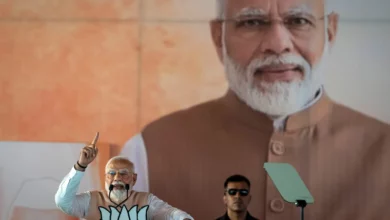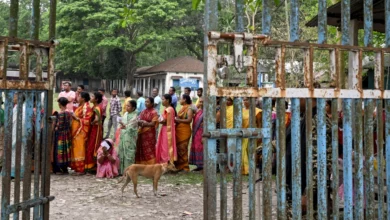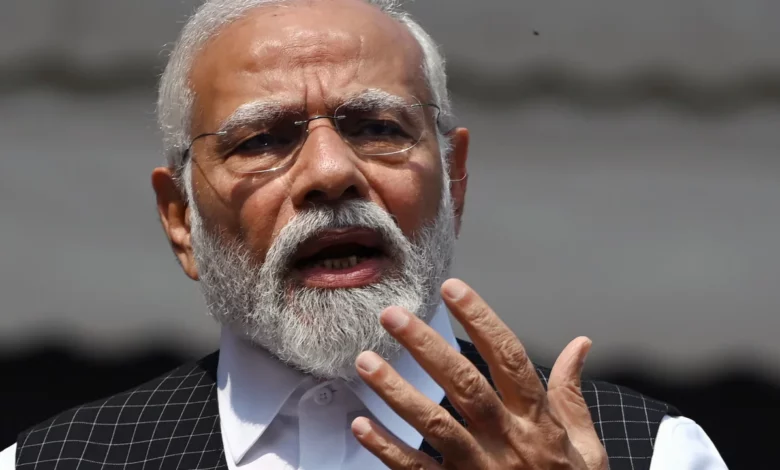
The leaders of 26 political parties formed the Indian National Developmental Inclusive Alliance, known as INDIA, during a meeting in the southern city of Bengaluru last week, marking a significant step in the months leading up to the general election.
Modi, the populist leader of the Hindu nationalist Bharatiya Janata Party (BJP), has tightened his grip on India’s democratic institutions in way not seen since 1970s, when Indira Gandhi ruled the country with an iron fist, pushing it toward autocracy.
Since Modi’s rise to power nearly a decade ago, critics say the once secular and democratic founding ethos of the world’s largest democracy is crumbling at alarming speed, with minorities feeling persecuted under the BJP’s majoritarian policies and any criticism of the government facing censorship and punishment.
In the years since becoming prime minister in 2014, Modi has grown only more powerful and popular, while his opponents have been pushed further to the side.
Now, it appears as if their only chance of winning is to join forces and consolidate their influence.
Next year’s vote is a “fight between Narendra Modi and INDIA,” Rahul Gandhi, the embattled former chair of the main opposition party, the Indian National Congress, told reporters after the alliance was formed last week.
While Indian elections remain competitive, taking on the ruling BJP will be a tough challenge, even for the most united of alliances.
The star power of Modi, his divisive but popular rhetoric among India’s Hindu majority, the lack of alternatives and the historic infighting of opposition, means the BJP are well placed to fight off challenges.
But despite previous personality clashes and power ambitions, the 26 opposition leaders appear unified in one goal: to overturn Modi.
Analysts say the BJP might have a reason to worry.
“The meeting should be seen as a serious attempt to form a united front to stop PM Modi’s BJP winning again,” said Niranjan Sahoo, a senior fellow at New Delhi’s Observer Research Foundation.
“Many regional parties sense a fighting chance vis-a-vis a hegemonic BJP under PM Modi.”
On Wednesday, the alliance made its first attempt by tabling a no-confidence motion against Modi for his inaction in the restive state of Manipur, which has seen an eruption of deadly ethnic violence.
The motion is unlikely to succeed, but it carries a symbolic message of an opposition united.
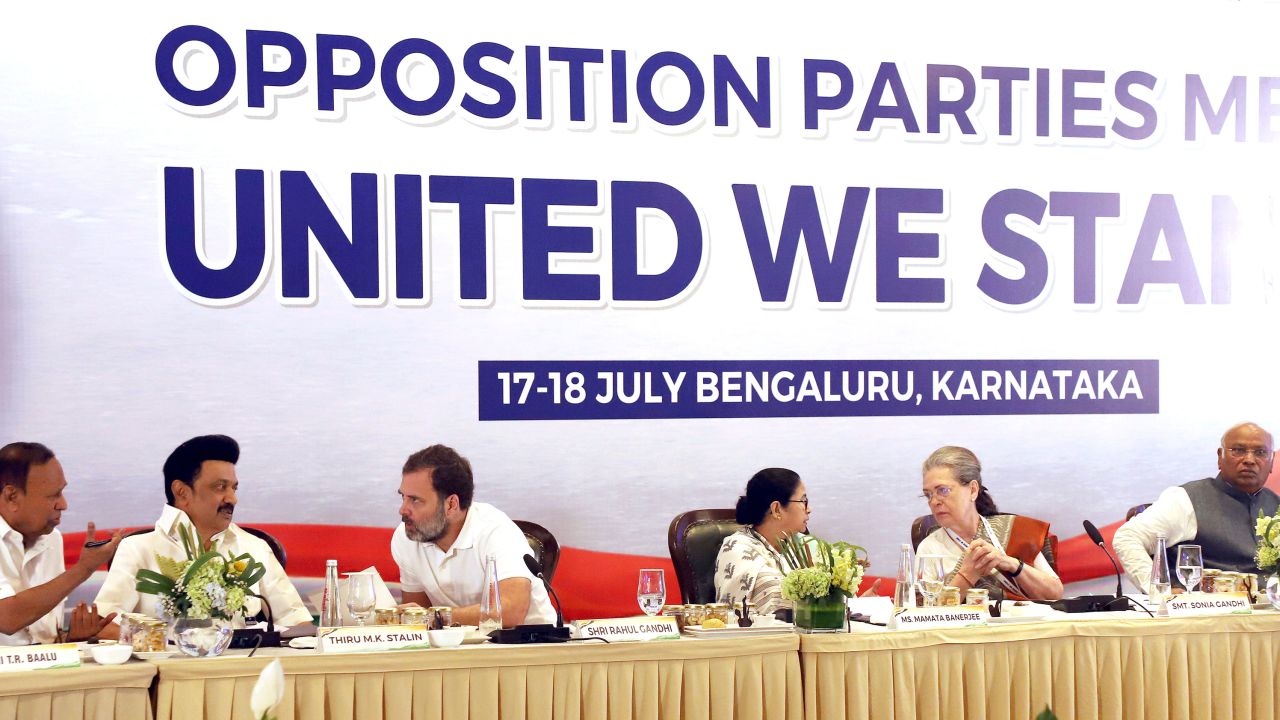
Gathering of important parties
Coined to evoke a sense of nationalism ahead of the 2024 general election, the INDIA alliance in a statement last week emphasized its goal of upholding the country’s democratic institutions.
“The character of our republic is being severely assaulted in a systematic manner by the BJP,” the statement said. “We resolve to fight the systemic conspiracy by BJP to target, persecute and suppress our fellow Indians.”
A key success of the new alliance has been to persuade other regionally important opposition parties to join Congress. That includes the Trinamool Congress, which is influential in West Bengal; the Samajwadi Party, which has a significant voting bloc in India’s largest state, Uttar Pradesh; and the Aam Admi Party, which governs Delhi.
It “gathers some of the most important regional opposition parties, as well as a number of smaller formations,” said Gilles Verniers, assistant professor of Political Science at Ashoka University and Co-Director of the Trivedi Centre for Political Data, adding it offers a “powerful symbol” of unity.
The coming together of these parties, many of whom have been competing against one another for decades, is significant, and that its leaders are willing to put to their own prime ministerial ambitions to one side, is noteworthy, analysts say.
Sahoo said it was “formidable” that these leaders “have shown a willingness to patch up with their rivals” to defeat the BJP.
“These parties led by Congress can put up a direct fight with the BJP in nearly two-third seats of Lok Sabha elections in 2024.” Sahoo said. “They can share resources and logistics to bridge the wide asymmetry with BJP.”
Millions of new voters
While the opposition parties got together in Bengaluru last week, the BJP and its allies also gathered in the capital New Delhi to celebrate nine years in power.
Modi described the INDIA alliance as a “hardcore corruption convention,” adding the BJP was on course to clinch another victory in 2024.
But analysts say there are signs of anxiety within the BJP, especially after it lost state elections to the Congress in the significant southern state of Karnataka earlier this year – a sign that its divisive Hindu-nationalist policies are not always a guaranteed vote-winner.
The election in Karnataka was the first significant gauge of voter sentiment since former Congress chief Rahul Gandhi embarked on a 4,000-kilometer (2,500-mile) trek across India to revive interest in his once powerful party.
“They are already worried,” Sahoo said. “This is clearly visible from the fact that the BJP brought as many as 38 partner allies to fight the Lok Sabha elections (lower house elections) next year.”
Verniers, from Ashoka University, noted “there will be millions of new voters,” to convince at the next election.
“The BJP must answer for the extraordinary concentration of wealth and for the economic distress that is prevalent in the country,” he said.
Still, Modi remains the face of India. Under his leadership, the country’s influence on the global stage has appeared to grow, with Western allies courting New Delhi and global companies looking to expand their footprint in the world’s most populous nation.
“After 10 years in power, the BJP now represents the establishment, and no longer the outsider force that would transform how politics is done in India,” said Verniers, adding however: “They do have reasons to be worried.”
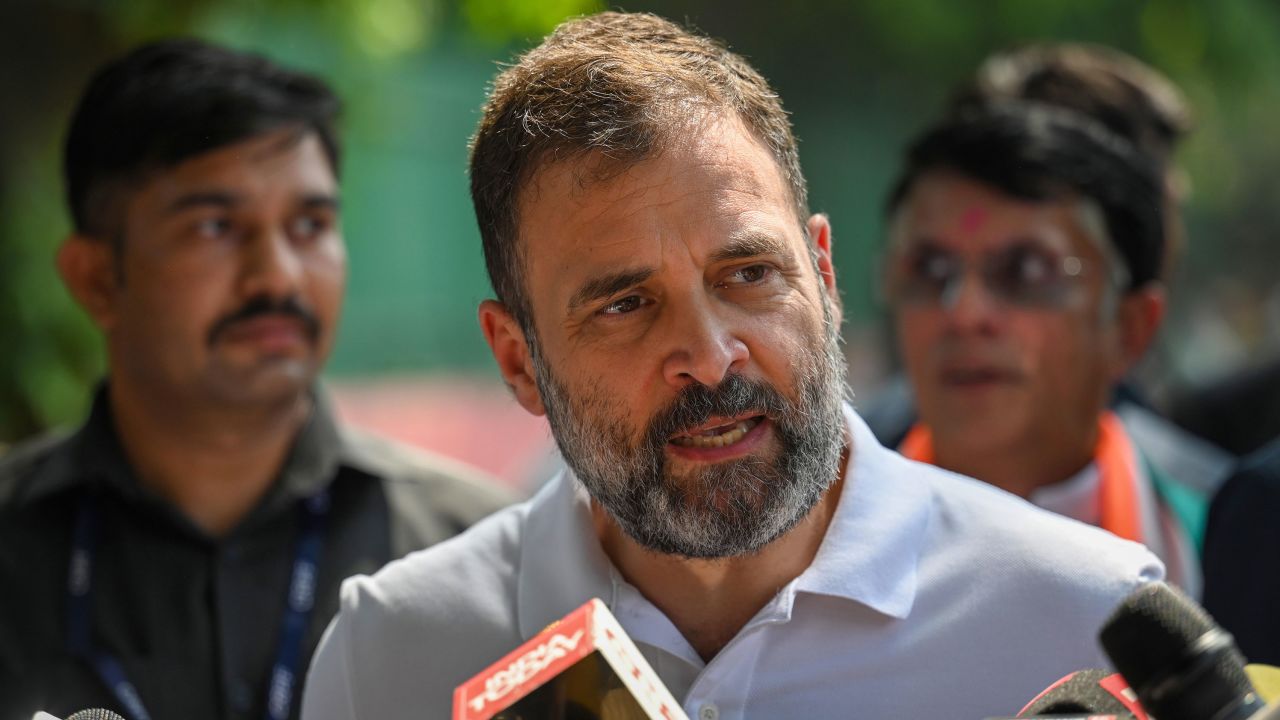
No clear leader
While the BJP can bank on the popularity of Modi, the INDIA alliance has not yet put forward a leader to challenge him next year.
Gandhi, the former Congress chief and great-grandson of India’s first prime minister, is perhaps the only candidate with the same level of star power, or name recognition, to take on Modi.
But Gandhi remains mired in a legal dispute his allies say is politically motivated, and has seen his status as a lawmaker revoked, leaving him unable to stand in the election next year.
“Having an acceptable PM face is going to be the biggest challenge for the new coalition given they will be campaigning against a popular and demagogic prime minister,” said Sahoo, from Observer Research Foundation.
Gandhi, who was convicted in March of defamation, is challenging that judgment in India’s Supreme Court. A ruling in his favor would see him get reinstated and able to run for prime minister.
It remains a challenge for INIDA to take on the BJP and its allies, but analysts say the new alliance has shaken the ruling order and sets the stage for a dramatic showdown next year.
“This has huge symbolic values which has brought shivers in the (BJP) camp,” Sahoo said. “Regionalism is a major issue in continent-sized democracy and regional parties have the ability to check the national party with deeply unfederal impulses.”

